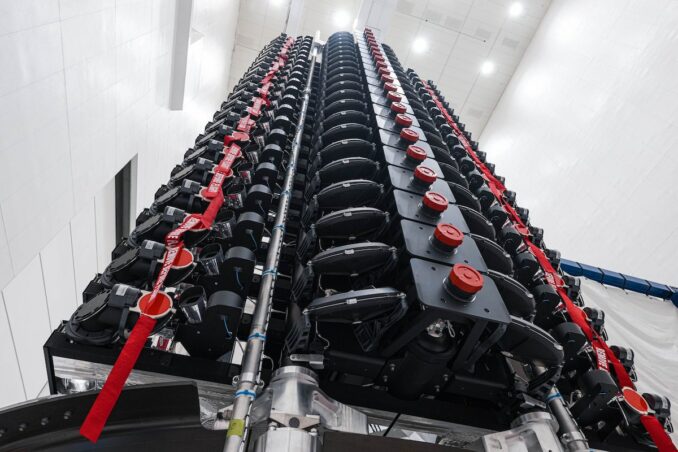Space News & Blog Articles
Live Coverage: SpaceX Falcon 9 rocket to launch from Cape Canaveral with 23 Starlink satellite
SpaceX was racing to get a Falcon 9 rocket ready to fly from Cape Canaveral Tuesday evening as launch preparations fell behind schedule. Currently liftoff with a batch of 23 Starlink satellites is planned for 1:47 a.m. EST (0647 UTC) Wednesday morning.
The Starlink 6-29 mission was originally targeted for 11:01 p.m. EST (0401 UTC) on Tuesday night but SpaceX pushed back the launch to 1:47 a.m. EST (0647 UTC). There are three more launch opportunities Wednesday morning, the last one coming at 2:59 a.m. EST (0759 UTC).
The Falcon 9 rocket was lifted upright at Space Launch Complex 40 shortly before 10 p.m. EST (0300 UTC), much later than would have been expected. The previous mission from pad 40 lifted off just four days earlier so if the current launch time sticks this would be the seventh fastest turnaround attempt for the launch facility.
 The Falcon 9 rocket is lifted upright at Space Launch Complex 40 as SpaceX presses ahead with plans for a Starlink delivery mission. Image: Adam Bernstein/Spaceflight Now.
The Falcon 9 rocket is lifted upright at Space Launch Complex 40 as SpaceX presses ahead with plans for a Starlink delivery mission. Image: Adam Bernstein/Spaceflight Now.
U.S. Space Force meteorologists at the 45th Weather squadron said Monday weather conditions would be 90-percent favorable at the time of the first opportunity with chances dropping slightly to 75-percent at the end of the launch window.
After lifting off from Cape Canaveral, the Falcon 9 will set off on a south-easterly trajectory targeting an orbit inclined 43 degrees to the Equator. After burning its nine Merlin 1D engines for nearly two and a half minutes, the first stage will separate from the second stage and continue downrange to land on the drone ship ‘A Shortfall of Gravitas’ in the Atlantic Ocean, about 424 miles (682 km) from the launch site.
 File photo of SpaceX’s Starlink V2 Mini satellites inside a payload processing facility at Cape Canaveral earlier this year. Credit: SpaceX
File photo of SpaceX’s Starlink V2 Mini satellites inside a payload processing facility at Cape Canaveral earlier this year. Credit: SpaceX
Meanwhile, high above, the single vacuum Merlin engine of the second stage will fire for about six-minutes to reach a parking orbit. After coasting for about 45 minutes, the second-stage engine will re-ignite for a two-second burn to refine the orbit. Deployment of the 23 V2 Mini Starlink satellites will follow at about one hour and five minutes after launch.
It will be SpaceX’s 87th orbital launch of the year and the 276th flight of a Falcon 9 rocket to date.
Spaceflight Now’s live coverage of the launch will get underway about an hour before liftoff. You can also watch 24-7 views of launch pads at the Cape in our Launch Pad Live stream.
When you subscribe to the SpaceZE News Feed, we will send you an e-mail when there are new updates on the site so you wouldn't miss them.

